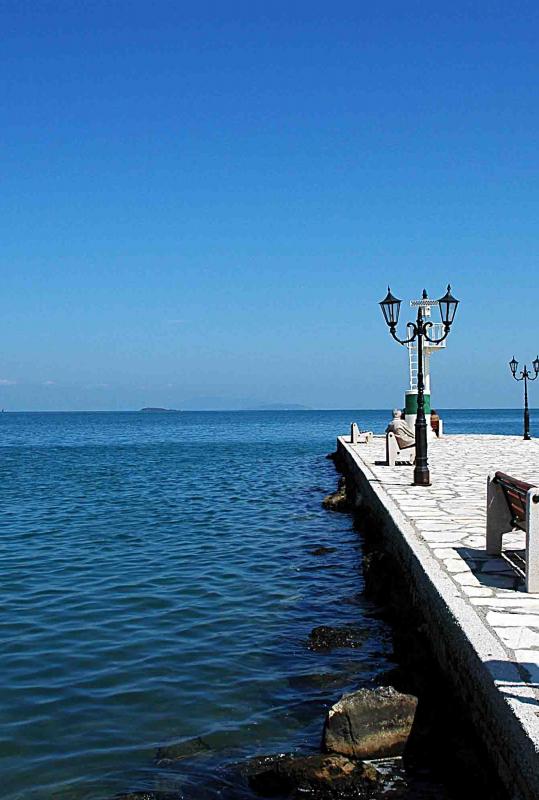There are two different versions regarding the origin of the town’s name. Besides Vonitsa, the relevant literature includes the name “Vonditza”, from a Slavic word meaning “water”. The second theory is based on a letter sent, in the early 13th century, by the archbishop of Nafpaktos, Ioannis Apokafkos, to the bishop of Vonitsa, Georgios Vardanis the Attic. The archbishop claims that the community’s name is actually Bulgarian in origin, from a word meaning “fish hook”. In both cases, though, it becomes clear that the local residents were well aware of the role of the aquatic element in their prosperity.

2. Vonitsa. The pier
The history of Vonitsa resembles an electronics store on Black Friday morning. Everyone is in a rush to get through the doors clamoring to be let in.
Stories
Water and fish hooks
Eight masters
Vonitsa was first inhabited in the 4th century AD by Byzantine refugees, who sought safety from the devastating invasion of the Visigoths. In 1204 Vonitsa came under the rule of the Despotate of Epirus, a Byzantine successor state that fought determinedly to liberate the lands conquered by the Latins. After brief spells under Serbian and Albanian rule, it became part of the territories controlled by Carlo I Tocco, the Count palatine of Kefalonia and Zakynthos. In the 1470s it fell to the Ottomans, but was taken by the Venetians in 1684 and remained in their control until 1797, when it was conquered by Napoleon. The French kept it for less than a year. Ali Pasha of Ioannina took it by surprise in 1798. Vonitsa was finally liberated by the Greeks in 1828.
An admiral for all seasons
The man who conquered Vonitsa for the Ottoman empire was Gedik Ahmed Pasha. He may have been of Serbian, Albanian, or Greek descent. Sultan Mehmed II entrusted him with some of the era’s most challenging campaigns. He defeated the Karamanids, one of the strongest dynasties in Anatolia (present day Turkey) and conquered numerous Genoese strongholds in the Crimea. Mehmed II considered himself the inheritor of the Roman Empire and planned the conquest of Italy. Gedik Ahmed Pasha was sent to the heel of Italy and besieged the city of Otranto. When the Ottomans breached the walls, more than 12,000 citizens were massacred. The admiral was executed in 1482, on the orders of the new sultan, Bayezid II, on the suspicion that he was conspiring against him.
Powered by Clio Muse Tours